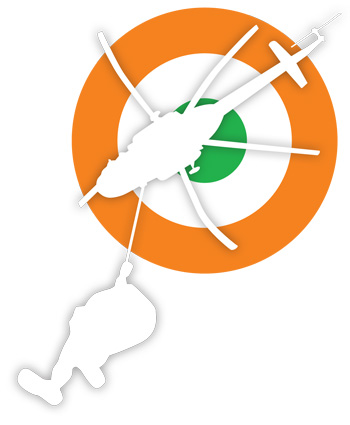INDIAN ARMED FORCES CHIEFS ON
OUR RELENTLESS AND FOCUSED PUBLISHING EFFORTS

SP Guide Publications puts forth a well compiled articulation of issues, pursuits and accomplishments of the Indian Army, over the years

I am confident that SP Guide Publications would continue to inform, inspire and influence.

My compliments to SP Guide Publications for informative and credible reportage on contemporary aerospace issues over the past six decades.
Respect the Forces
Time and again, Indian armed forces have proved their capability of providing speedy response to natural or man-made disaster. For the stellar role played, they deserve utmost respect from all.

Whenever a disaster strikes, whether natural or man-made, in that moment of distress and disaster the Government of India invariably sends out the our armed forces (Air Force, Army, Navy, Coast Guard and other bodies) to help the state machinery in their rescue and relief efforts. Going beyond their call of duty and risking their life and stretching the equipment to their operational limits, working round the clock ignoring exhaustion, Indian men and women in uniform perform like a well-oiled machine not just saving lives and providing much needed relief and support but doing such in a way that wins the heart of all and sundry along the way.
In the recent years, the involvement of the Indian Air Force (IAF) in Humanitarian Assistance and Disaster Relief (HADR) missions both within the country and abroad, has been on the rise. Whether it was Operation Rahat in June 2013 in the wake of flash floods in Uttarakhand or when River Jhelum broke its banks after heavy downpour and wreaked havoc in parts of Jammu and Kashmir in September 2014 or the manmade disaster in Tamil Nadu that flooded the city of Chennai in December 2015, the IAF responded in all cases with alacrity, characteristic speed, resolve and fortitude to provide succour to the sections of the population in distress.
Disaster relief operations undertaken by the IAF involves both fixed and rotary-wing platforms. Helicopters are required to land on very small, hastily improvised helipads and fly sorties to villages that had been reduced to rubble and are indeed difficult to locate and identify. It is undoubtedly a daunting task; but despite the adversities, the IAF renders yeomen service. Apart from flying in relief material and flying out of stranded personnel, largely civilians, IAF transport aircraft are used to deliver aviation turbine fuel at helipads in remote areas from where helicopters were required to conduct rescue operations in the hilly areas. In Operation Rahat, the IAF flew 3,536 sorties, evacuated 23,892 persons and delivered 797 tonnes of relief material. This mammoth task was undertaken by a fleet of over 50 helicopters and transport aircraft. During the devastation in J&K, the IAF flew around 3,000 sorties, airlifting 4,500 tonnes of essential supplies both by transport aircraft and helicopters. The transport aircraft evacuated about 35,000 civilians, while the helicopter fleet rescued about 17,000 persons who were stranded in isolated and inaccessible areas.
What is of essence in such disaster management operations is the inherent capability of the IAF for providing swift response. It has a fleet of ten Boeing C-17 Globemaster III four-engine strategic airlift aircraft that can lift payload of around 75 tonnes and has a range of around 4,500 km. This enables the aircraft to reach any part of the globe in the shortest possible time with heavy payloads consisting of relief material or personnel. This fleet is adequately backed up by a fleet of 12 four-engine Lockheed Martin C-130J Super Hercules tactical transport aircraft that can carry a payload of around 20 tonnes over a distance of over 3000 km. Both these aircraft can carry large number of passengers or stretcher patients as well as combination of the two when deployed for emergency evacuation. The IAF is now left with just one squadron of the Russian IL-76 MD strategic airlift aircraft that can carry around 50 tonnes of payload over 5000 km. Then there is a large fleet of the medium lift Antonov An-32 twin-engine transport aircraft to augment the capacity of the fleet of the two heavy-lift platforms. It is expected that in the near future, the IAF will receive 56 or more of the versatile Airbus C295 twin-engine military transport aircraft that will further enhance the capability of the transport fleet of the IAF to undertake HADR missions with greater efficiency. Apart from the fixed-wing fleet, the IAF has a variety of helicopters, medium-lift to light utility platforms.
The airlift capability of the IAF came in very handy when in March 2015, the State of Yemen landed up in a crisis on account of a war imposed on the State by a coalition of Arab forces that launched aerial strikes. The Government of India assessed a requirement of immediate evacuation of over 4,000 Indian nationals based at various locations in the State of Yemen. Along with ships of the Indian Navy, the IAF deployed three C-17 Globemaster III to ferry back Indian nationals from Djibouti to Kochi in Kerala and Mumbai. As many as 11 evacuation flights were undertaken by the IAF aircraft facilitating the safe return of 2096 of the 4000 Indian nationals in the shortest possible time.
The latest disaster to which the IAF responded speedily and rendered yeomen service, were the floods in Kerala. The IAF responded immediately rescued the stranded, winching ladies, children and the elderly from rooftops of submerged houses, dropped packed food and water to those trapped in the floods.
The Indian Armed Forces are not only well equipped for the task, but its personnel are well trained, highly motivated and dedicated. Time and again, they have proved their capability of providing speedy response to natural or man-made disaster. For the stellar role played, the Armed Forces deserves utmost respect from all.





